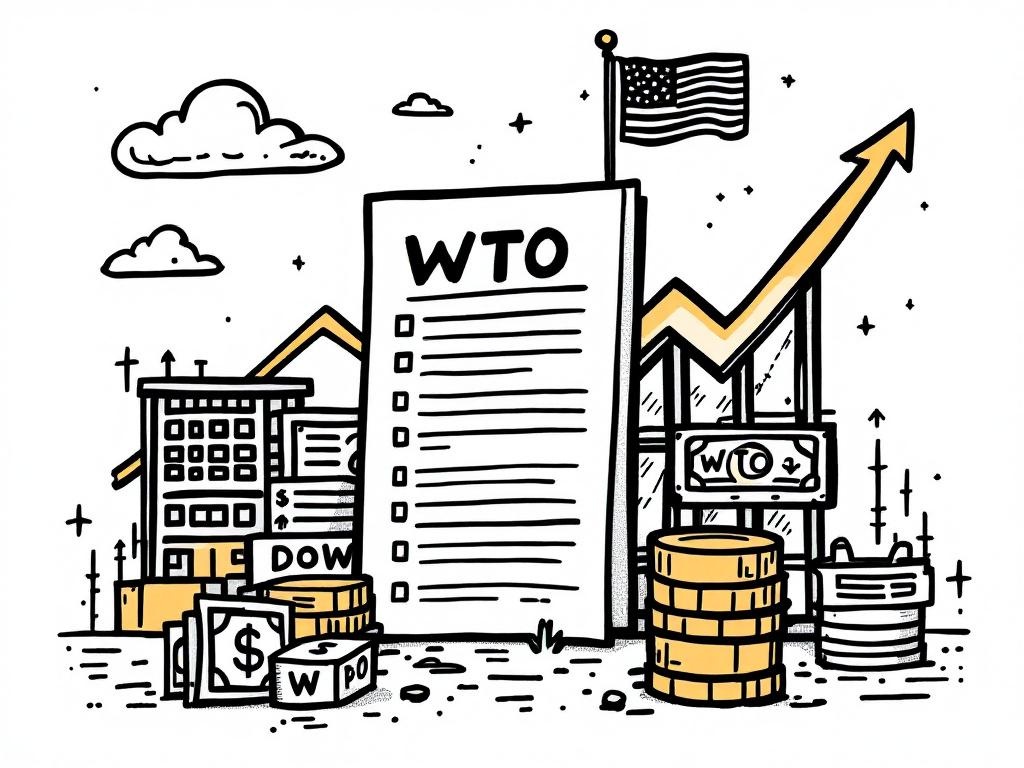WTO Predicts Sharp Decline in Global Trade Growth for 2026

Geneva, Tuesday, 7 October 2025.
The WTO forecasts global trade growth to fall from 2.4% in 2025 to 0.5% in 2026, primarily due to the lingering effects of U.S. tariffs.
Impact of Tariffs on Global Trade
The World Trade Organization (WTO) has projected a sharp decline in global trade growth for 2026, primarily due to the enduring effects of tariffs imposed by the U.S. under President Donald Trump. The new forecast anticipates growth to slow to 0.5%, a significant drop from the 2.4% growth expected in 2025. This downgrade is attributed to the delayed impact of tariffs, which include substantial levies on key commodities such as steel, aluminum, and automobiles [1][2][3].
Resilient Growth in 2025
Despite the bleak outlook for 2026, global trade exhibited resilience in 2025, with the WTO revising its forecast from an initial 0.9% to 2.4% growth. This upward revision was driven by a robust performance in AI-related goods, which saw a 20% year-on-year increase in value, and strategic import front-loading ahead of tariff hikes in North America. The first half of 2025 alone witnessed a 4.9% increase in trade volume, highlighting the temporary buoyancy of global markets before the anticipated slowdown [2][3][5].
Strategic Responses and Economic Implications
The global trade environment in 2025 benefited from strategic responses to tariff changes, including the suspension of many duty hikes between April and August, which temporarily mitigated trade disruptions. However, the WTO warns that the full impact of these tariffs will manifest in 2026, posing risks to global economic stability. The anticipated trade slowdown underscores the importance of a rules-based multilateral trading system, which has been pivotal in maintaining trade resilience amid policy uncertainties [3][5][6].
The Role of AI and Emerging Markets
AI-related products played a crucial role in sustaining trade growth in 2025, contributing nearly half of the overall expansion. Regions such as Asia and Africa are expected to continue leading export growth, although a general weakening is projected across all regions in 2026. The trade of AI-linked goods, including semiconductors and telecommunications equipment, remains a significant driver of global trade dynamics, underscoring the sector’s growth potential despite broader economic challenges [5][7][8].
Sources
- www.nytimes.com
- www.cnbc.com
- www.reuters.com
- wto.org
- global.chinadaily.com.cn
- www.bloomberg.com
- english.news.cn